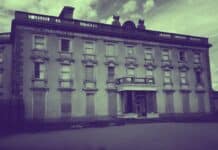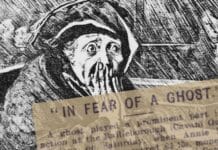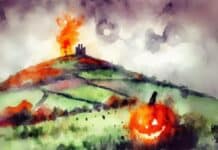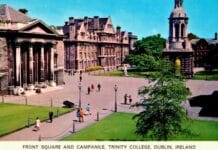Ireland’s bloody history is full of massacres and killings over the centuries, so ANN MASSEY has taken a look at some of the strangest murders to take place in the Emerald Isle.
Cannibalism and the Unlucky Cabin Boy
When Patrick O’Brien from Limerick City was 15 years old, his mother a poor widow resigned to the streets and poor Patrick was destined for a life in the Workhouse.
Determined to change his lot in life, on 25 November 1835, the young lad signed up as a cabin boy aboard the Frances Spaight, a lumber ship that also took passengers and was based at Limerick Docks.
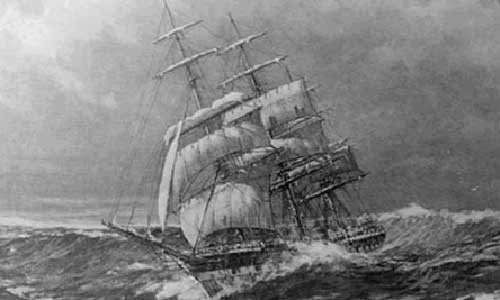
That same day the ship set sail for New Brunswick, under the command of Captain Thomas Gorman. Immediately on docking the crew loaded their cargo and began the return journey to Limerick. The weather was freezing and icy and on 3 December a massive winter storm hit the Francis Spaight.
Three of the crew were washed overboard along with all the food provisions. The ship itself was upended before settling, however, not before all the drinking water was contaminated. Whilst the lumber in the hold was keeping the Spaight afloat, the crew were stranded and without food and drink.
Thomas Gorman called his shipmates together and announced that in order to survive, lots would be drawn and the loser would be killed and eaten by the remaining crew.
Patrick O’Brien drew the short straw, however, it is believed the lottery was rigged as he was the only crew member without a family to support. The boy bravely put forth his wrists, however the weather prevented a decent flow of blood and so the cook grabbed him and slit Patrick’s throat.
Three other crew members were put to death the same way as they had become deranged and deemed unsafe to leave alive. On 23 December 1835, a rescue vessel boarded the Francis Spaight to find Captain Gorman eating the brains and liver of the deceased cabin boy, Patrick O’Brien.
On returning to Limerick, Captain Gorman and the remaining crew were put on trial for murder and acquitted due to circumstance with the support of the ship’s owner, who donated just £10 in total to the families of the victims.
Mass Murder at Maamtrasna
In the Irish speaking only Galway/Mayo village of Maamtrasna, on Friday 18 August 1882 piercing screams broke the night silence. No one dared approach the cottage of John Joyce and his family until the bloodcurdling cries had stopped.
Upon entering through the smashed front door, a group of neighbouring villagers discovered a horrific sight. John was lying naked in the hall, shot dead, his wife with her skull crushed, and mother in law Margaret was stripped and battered to death. John’s daughter Peggy was bludgeoned and another son would die later from bullet wounds. One more child, Patsy had head wounds but survived.
It was a time of unrest in Ireland as there was rebellion against the Landlords, however, no one had expected this horror in a tiny Irish speaking community. It was of great shock that 10 local men including family of the deceased were accused by alleged witnesses.
The men were taken to Dublin for trial, in which they sat before a middle class jury and the trial was conducted only in English so the accused could not understand what was happening.
Two of the defendants turned State Witnesses, which directly led to the execution in December 1882 of three of the men, cousins of John Joyce. The remaining convicts were given long sentences and 2 died in jail. The remainder were released without pardon after 20 years.
Were these men scapegoats to cover an attempt at rebellion suppression or victims of a crazed killing spree? We will never know.
Bridget Cleary – Fairy Changeling or Murder Victim?
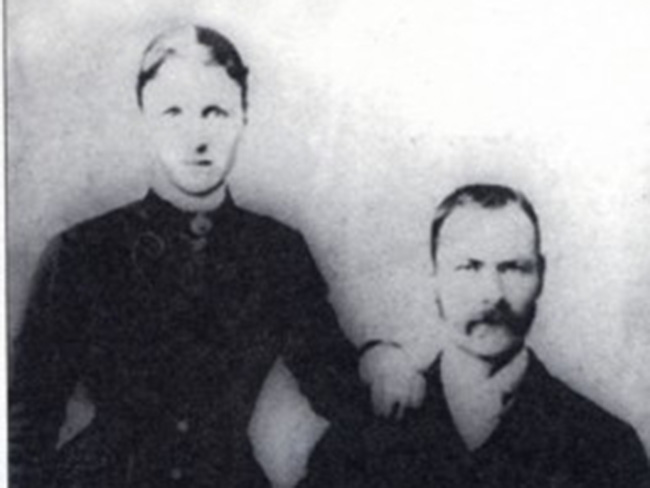
In 1895, Ireland witnessed the most chilling and compelling of murder trials to ever take place in the Emerald Isle to the extent it was reported in newspapers throughout Britain, Ireland and Canada. Those charged with her murder cited the Fairies as their defence.
Bridget Boland Cleary was fiercely independent and uncharacteristic of a married woman at that time, as not only was she literate, she was also a very successful business woman. Wed to a man nine years her senior, they resided with her father in a cottage in Tipperary.
Following an illness, the young wife had been forced to take herbal concoctions, however, as her condition remained unimproved, the doctor was sent for but was unable to attend until for a few days. In the meantime, rumours began to circulate that Bridget Cleary was gone and that a Fairy Changling had been left in her stead.
On examination the doctor said that Bridget had a complaint, possibly TB or Bronchitis but in general her life was not believed to be at risk, but the priest was called for to deliver the Last Rites. He too was convinced Bridget was not dying and stated there was no need for him to return.
At this stage both Michael Cleary and Bridget’s father Patrick were openly denouncing the poor woman as a Changeling as she remained sickly. The folklore ‘cures’ being administered were becoming frequent and more brutal. More family and neighbours were now involved and Bridget was subjected to force feeding, urine being thrown upon her as well as being verbally and physically abused. On 14th March she was finally carried by all present to the fireplace whereupon it was demanded she recite her name three times to prove she was not a Changeling, whilst being held over the fire.
On 16 March Bridget Cleary was reported missing.
Michael Cleary stated his wife had been taken by the Fairies and they were seen to be holding a vigil for her safe return. Following intervention from the local priest, after five days Bridget Cleary’s corpse was found, buried in a shallow grave, charred and burned.
Locals held silent until arrests were made and the trial began. Nine people in total, with Michael Cleary being the main accused were charged with her murder and/or wounding. The evidence brought out at trial was horrific, particularly the post-mortem findings including exposed bones, strangulation marks and burning. Cleary’s defence? She was too fine to be his wife and on this basis he deduced she was a Changeling and should be slain.
In total five people were convicted, four of wounding and Michael Cleary of the manslaughter of his wife, Bridget Cleary, for which he served 15 years in prison. Poor Bridget will forever be remembered as the victim of Ireland’s most bizarre and controversial murder trial.
Murder on the path to Sainthood
Saint Kevin of Glendalough is known for the founding of the Wicklow Monastery and his love of animals, however his rise to Sainthood was not without incident.
Born in the final years of the fifth century, the young boy may have been deemed holy at birth, however his behaviour was anything but Christian. Kevin was a foul tempered, difficult child who hated people and preferred the company of animals.
Kevin was sent to the monastery at the age of just seven and upon being ordained pledged a life of abstinence and began to live in a small cave as a hermit until he was forced back into the community due to his miracles.
The young man was blessed with good looks and brought attention to himself and a local woman, Kathleen set her sights on seducing the poor monk.
The harlot used to dress provocatively in red and follow the celibate Kevin until one day she followed him into the woods and pushed him too far.
Desperate not to fall to temptation, Kevin threw himself into a bed of nettles and in temper tore some off and beat Kathleen towards the edge of the lake, whereupon he forced her into the water and drowned her.
The tale of Kathleen’s murder has been reported for centuries and both poets and musicians alike have immortalised the tale. Long after the death and canonisation of Saint Kevin, the failed seductress Kathleen still haunts the ruins of Glendalough Monastery.
Murder at Ballyvolane House
In 1730 the elderly Andrew and Jane St Leger had rented the grand house in Cork from the owners. They kept their valuables in a treasure chest in their bedroom as was typical of the time.
Butler Timothy Croneen and maid Joan Condon became focused on the hoard and together they plotted the murder of the old couple. On 4th November 1730, Joan allegedly held a candle as Timothy shot Andrew St Leger and brutally stabbed his wife Jane multiple times with a sword.
In order to create an alibi, the two buried the chest they had stolen in the shrubbery of the house and returned to their quarters so it appeared strangers had committed the heinous crime.
The alarm was raised and shock spread through Cork. It was traditional that employees would ride on the carriage carrying their deceased master/mistress and so the murderers found themselves on the day of funeral riding with the bodies of their victims.
The family dog, a spaniel followed behind the hearse carriage, crying pitifully and unnerving Joan Condon in the process. Worried she would crack under the pressure, Timothy Croneen jumped down and picked up the dog. Once the procession was out of sight he slit the dog’s throat and tossed it into a ditch.
Croneen caught up with the cortege, however with the spaniel’s disappearance the other servants began to take an interest in the shifty butler and maid. A ford was reached and the horses refused to cross the river, despite every effort. Mutterings began that only witches could not cross the river and was there someone on the carriage causing the horses’ distress.
Finally the horses crossed but suspicion against the two continued to mount and the staff became very vocal in their belief that the authorities should look no further than Ballyvolane for their killers.
Panicking Croneen and Condon fled the house without their loot and headed for Cork Harbour where they boarded a boat for France. A storm blew up and the vessel was unable to set sail and delayed departure for 24 hours.
Crazed with fear at this stage, the fugitives travelled up to Limerick Port, however as time passed their pictures had travelled the counties and they walked straight into an alert official who arrested them and returned them to Cork for trial. Both were tried and convicted of double murder and the theft of the treasure.
Timothy Croneen was hanged at Gallows Green, hung, drawn and quartered. His head was then placed on a spike as a warning to others at Cork. Joan Condon however was allegedly a different story.
She was convicted of being a witch and was taken to a place within the shadow of the murder scene where she was burned at the stake. The treasure chest was never recovered. Were the servants right that they had a murderous witch in their midst?


